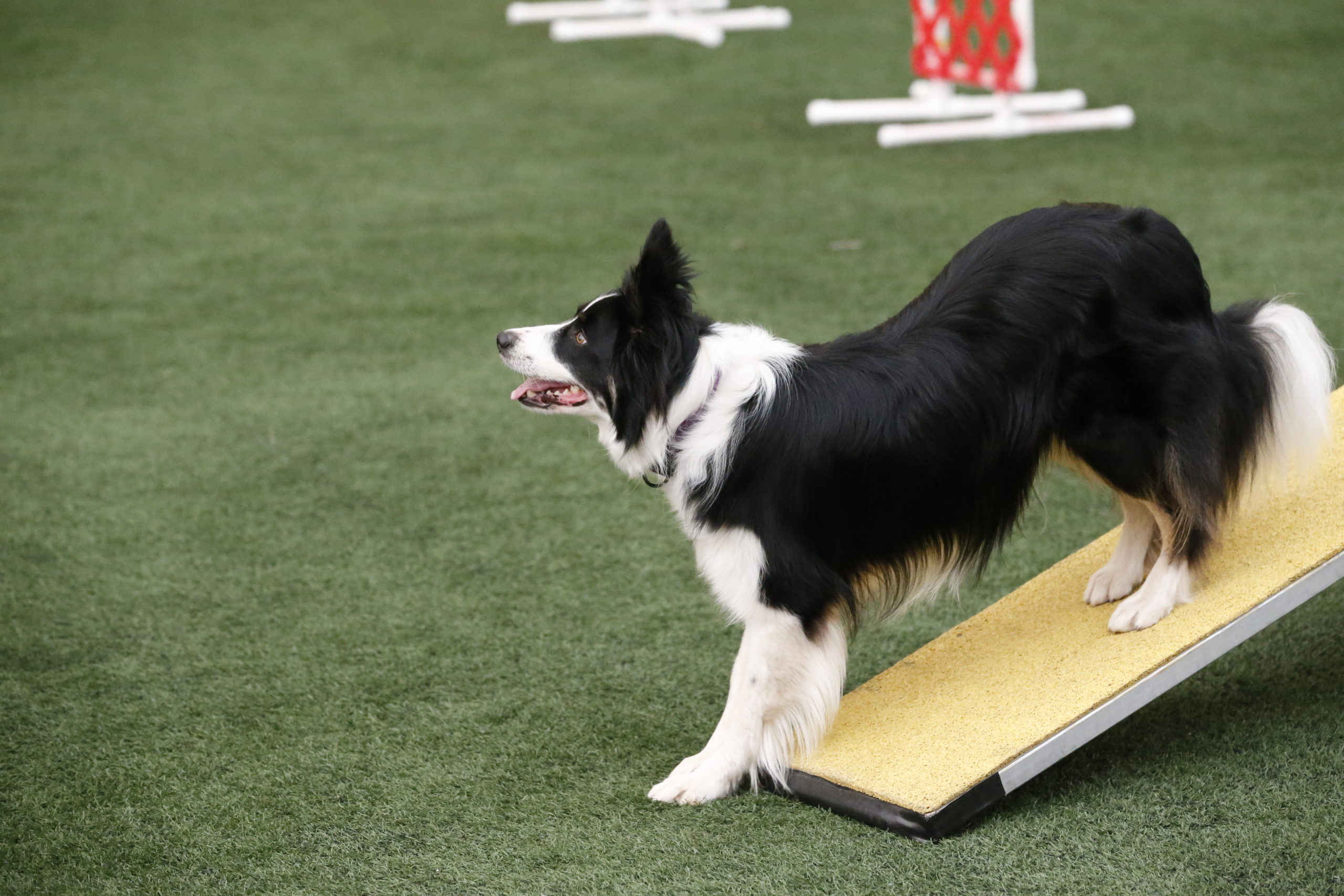Beginner Agility 2
Beginner 2 continues where Beginner 1 left off, expanding handler skills and elevating teams to short sequences. This class will help build a safe, positive foundation to play agility together with your dog. Learning objectives include instilling confidence in the dog and handler to work together, safely working around agility equipment, and fostering encouragement and positivity around agility equipment.
This class provides an introduction to short jump/tunnel sequences, weave poles, and the rear cross. Teams will continue to build confidence working together off leash in short sequences and be introduced to a variety of jump types (double, triple, tire, panel, broad, wall). At the end of this course, students should be ready to perfect their Contacts and Weaves performance and explore more challenging sequences and handling techniques in Intermediate 1.
Prerequisites
– All skills from Beginner 1 Agility (or similar skills from another club)
– Dogs should be at least 12 months old
– The handler should understand shaping, motivators, and targeting
– Dogs must have a stay and recall around distractions and be able to work around other dogs (impulse control). Dogs will be crated between exercises
– Dogs and handler should practice body awareness and strengthening exercises at home regularly (ladder, pivots, feet targeting, hand targeting, go around cones etc.)
– Dogs should have seen the tunnel, table, low jumps, wobble board, tippy board.
– Dogs should have the following verbals: release word, stay, sit, go, go get your box, table, tunnel, contacts/2o2o word (bottom/toes/feet/stick it/two)
Class Learning Objectives
– Continue building consistency on Foundation and Beginner 1 skills
– Jumping: send over multiple jumps, wrap (right/left)
– Equipment: send to table, tunnel, contact end behaviors
– Weave Poles: Introduction to channel weaves and 2×2 weave entries
– Body Awareness: Return to heel (close, with collection; increasing distance; both directions)
– Handling: Rear cross, intro to motion, various crosses, forward/lateral sends, sequencing
Prerequisites: Beginner Agility 1 and instructor permission
Agility classes may be repeated once, if necessary. If your dog has not learned the required skills after repeating a class you will be placed on a waiting list until there is space for you to try again.
All classes involve wait time until it is your turn to run your dog. You must bring a crate to agility class so your dog can learn to wait calmly and quietly.
Agility students will be expected to comply with rules set by AKC, see the AKC handbook for reference. Section 9. Collars. At the handler’s option, dogs may run a course with or without a collar. The only collars allowed when running a course are flat buckle or rolled leather collars, but there shall be no attachments hanging or otherwise allowed on the collar. This shall not preclude painted or stitched designs or information on the collar. Dog’s names and/or identifying information may appear on the collar. No title, awards, or advertising may appear on the collar. Dogs may be brought to the start line on slip leads, choke chains, body harnesses, head halters or other collars that are permitted on the trial grounds. Pinch/prong and electrical collars (dummy or not), and special training collars are not allowed anywhere on the trial grounds.Additionally we will follow the AKC policy of no harsh treatment of dogs: Section 6. Exusuals. Handler continuously or conspicuously leads the dog through the course (excessive handling), uses harsh commands, or corrections. Including: Unsportsmanlike conduct.Handlers are expected to treat their dogs, instructors, other students, and themselves with respect and kindness. This will be a positive reinforcement environment.

